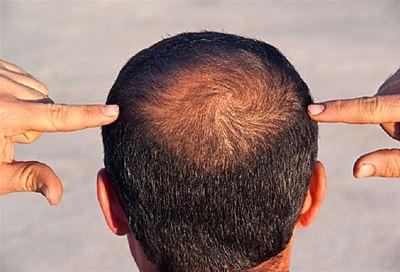Why Is The Crown A Black Hole For Grafts?
There are several reasons why the crown is referred to as a "black hole" the first reason is the size. The majority of individuals underestimate the overall size of their crown, because the crown starts horizantally and drops vertically towards the back of the scalp. If the crown of an individual with a Norwood 6 pattern was measured in square centimeters (cm2), it would be roughly the same size as their front and midsection. It is easy to assume that the front and midsection of the scalp would be larger than the crown, because the surface area is easily visible and is horizantally in plain view, but the assumption would be wrong.
Another factor to consider is the direction and angle of the hairs in the crown. If you look closely at the crown the hairs are angled flat around the hair whorl in a clockwise or counterclockwise direction, this means the amount of grafts needed to create visiual density will be significantly higher than the hairline and midsection. In addition, androgenic alopecia (genetic hair loss) is progressive thus, the crown can expand and grow larger over time.
The reasons a hair transplant surgeon is conservative with a crown restoration are two fold; one the individual may require more grafts in the future to restore the front and midsections of their scalp, which are cosmetically more important than the crown and two the individual's crown can expand and create what is referred to as a "donut hole" which is the result of hair loss progression.
So How Many Grafts Do I Need?
Sadly, there is no exact number, because every individual has a unique size and shaped head. Additionally, the donor hair characteristics of each individual is different. Individuals with thick, curly coarse hair will require less grafts to achieve a dense appearance than an individual with fine straight hair. However, for the sake of generalizing most individuals require anywhere from 3,000 to 4,000 grafts in the crown alone to restore density.
Conclusion
Currently, there are two FDA approved medications that are proven to be effective in preventing, stopping and even regrowing hair in the crown, the medications are Propecia (finasteride) and Rogaine (minoxidil). Taking both of these medications should be the first course of action for any individual suffering from hair loss in the crown. However, any patients still requesting restoration in the crown should be cogniznant of the aforementioned factors and limitations.

